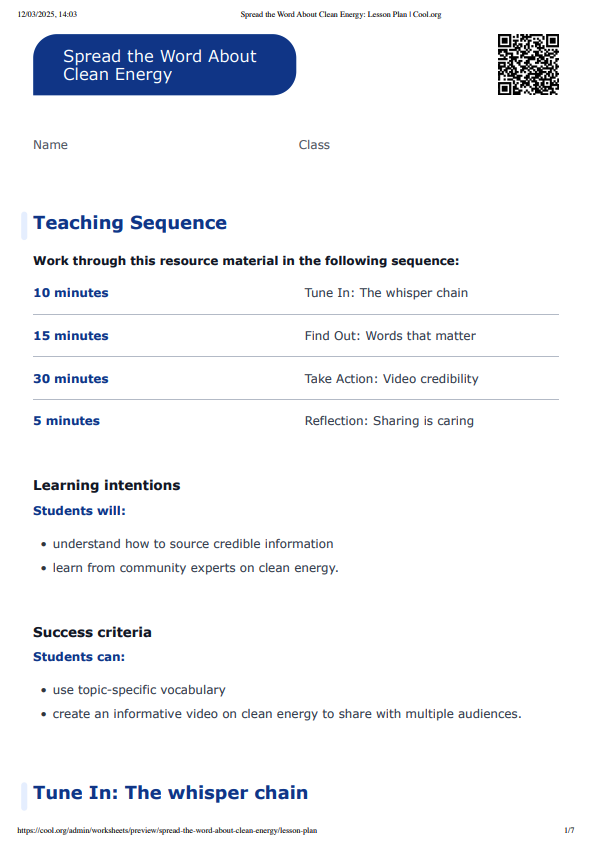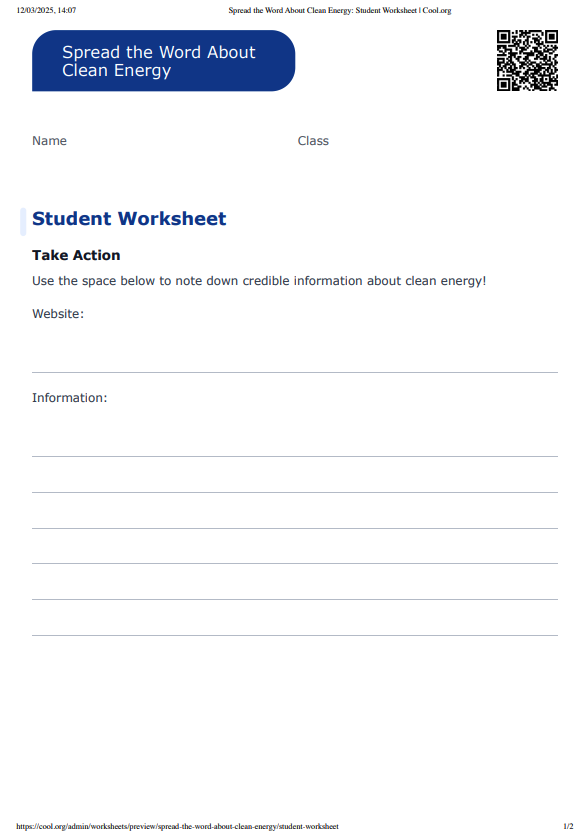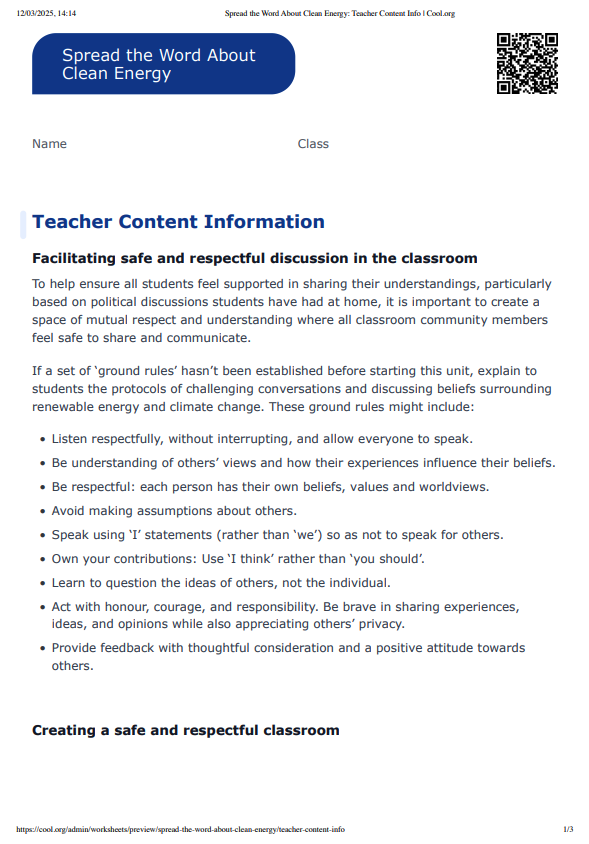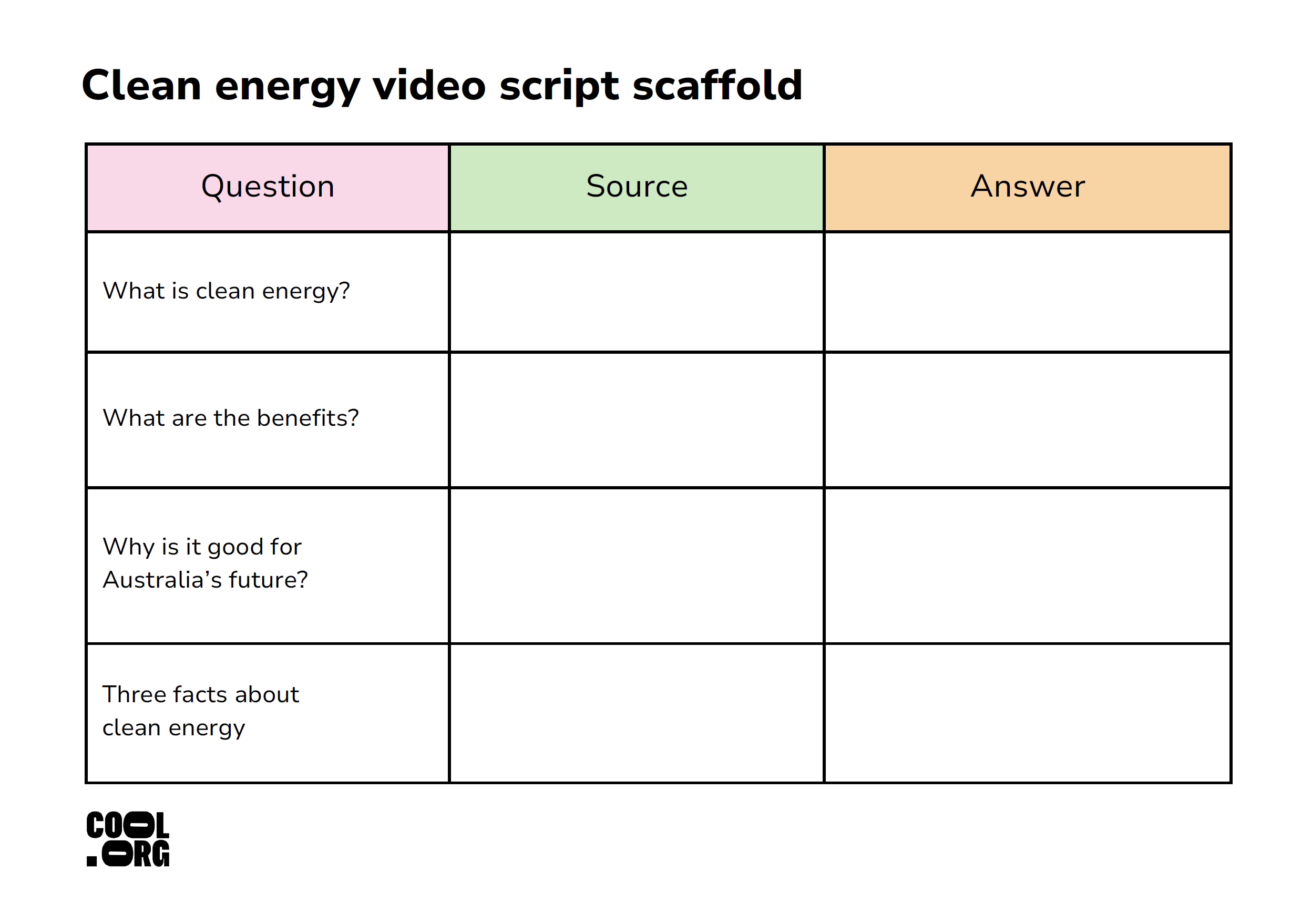Lesson summary
Using real-life examples, students will learn to identify credible information in videos, websites, and text. They will use this information to plan, create, and publish a short informative video about clean energy and discuss ways to share it with the broader community.
Learning intentions:
Students will...
- understand how to source credible information
- learn from community experts on clean energy.
Success criteria:
Students can...
- use topic-specific vocabulary
- create an informative video on clean energy to share with multiple audiences.
Lesson guides and printables
Curriculum links
Select your curriculum from the options below.
Lesson details
Skills
This lesson is designed to build students’ competencies in the following skills:
- creative thinking
- critical thinking
- collaboration
- communication
- digital literacy
- problem-solving
- prototyping
Curriculum Mapping
Australian Curriculum (v9.0) content description:
Year 5, English
Students learn to:
- plan, create, edit and publish written multimodal texts whose purposes may be imaginative, informative and persuasive, developing ideas using visual features, text structure appropriate to the topic and purpose, text connectives, expanded noun groups, specialist and technical vocabulary, and punctuation including dialogue punctuation (AC9E5LY06).
Year 6, English
Students learn to:
- plan, create, edit and publish written and multimodal texts whose purposes may be imaginative, informative and persuasive, using paragraphs, a variety of complex sentences, expanded verb groups, tense, topic-specific and vivid vocabulary, punctuation, spelling and visual features (AC9E6LY06).
Relevant parts of Year 5 English achievement standards: Students create written and/or multimodal texts, including literary texts, for particular purposes and audiences, developing and expanding on ideas with supporting details from topics or texts.
Relevant parts of Year 6 English achievement standards: Students create written and/or multimodal texts, including literary texts, for particular purposes and audiences, developing, explaining and elaborating on relevant ideas from topics or texts.
NSW Syllabus outcomes:
A student:
- plans, creates and revises written texts for multiple purposes and audiences through selection of text features, sentence-level grammar, punctuation and word-level language. (EN2-CWT-03)
General capabilities: Critical and Creative Thinking, Digital Literacy, Literacy, Personal and Social Capability
Cross-curriculum priority: Sustainability
Level of teacher scaffolding: Medium - conversational scaffolding as required for students.
UN Sustainable Development Goals
- Target 4.7: By 2030, ensure that all learners acquire the knowledge and skills needed to promote sustainable development, including, among others, through education for sustainable development and sustainable lifestyles, human rights, gender equality, promotion of a culture of peace and non-violence, global citizenship and appreciation of cultural diversity and of culture’s contribution to sustainable development.
Resources Required
- Clean energy video script scaffold activity sheet
- Device capable of displaying audiovisual material
- Pens
- Student devices
- Student Worksheet
- The FLICC model Visual Explainer
Additional Info
Cool.org thanks our philanthropic funder, Boundless Earth for their generous contributions and collaboration in creating these resources.





Welcome back!
Don't have an account yet?
Log in with:
Create your free Cool.org account.
Many of our resources are free, with an option to upgrade to Cool+ for premium content.
Already have an account?
Sign up with:
By signing up you accept Cool.org's Terms and Conditions(Opens in new tab) and Privacy Policy(Opens in new tab).